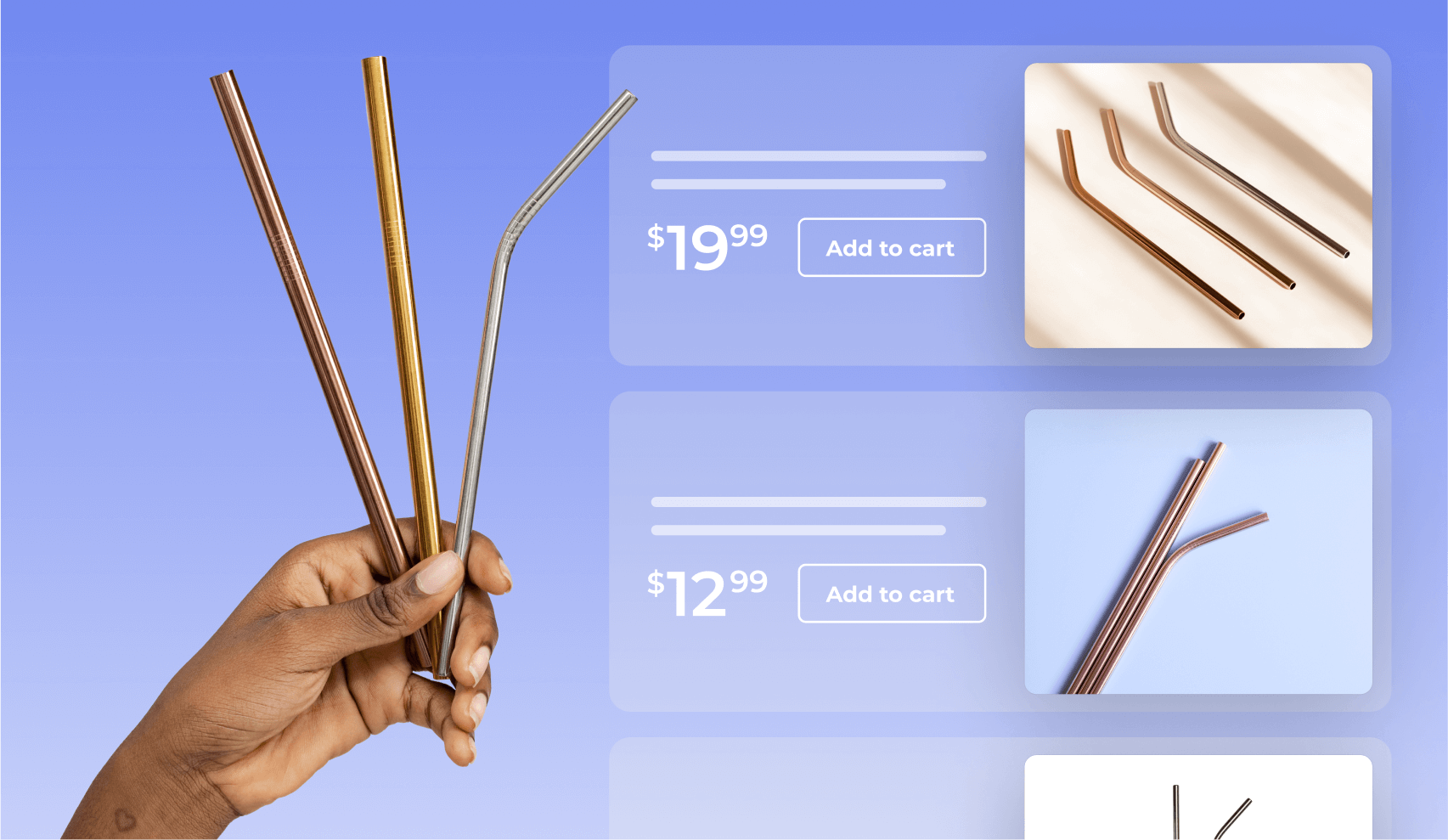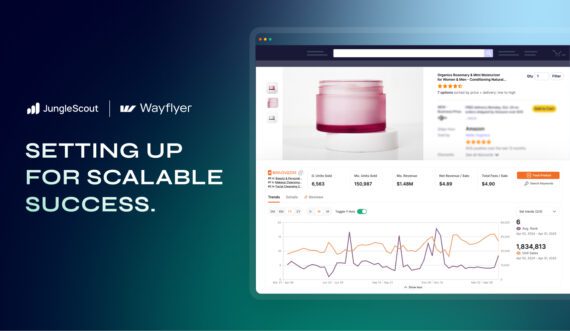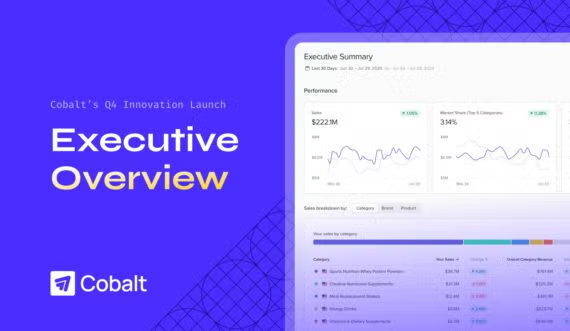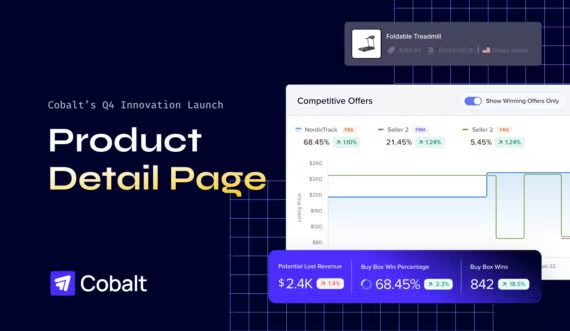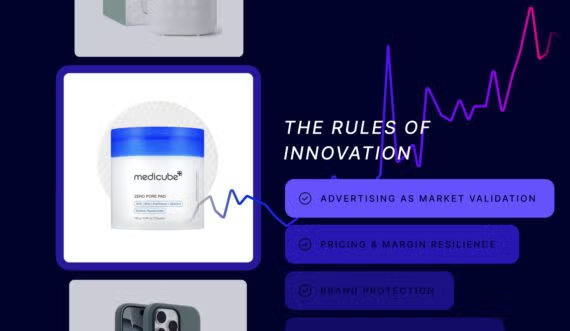Selling on Amazon FBA is more competitive than ever. Millions of sellers compete for customers’ attention, and similar products often appear together in the search results.
In the crowded Amazon marketplace, standing out is not just a bonus—it’s a necessity. Product differentiation is the key to achieving visibility, improving rankings, and increasing sales.
This guide explores the concept of product differentiation on Amazon and provides actionable strategies for sellers to distinguish their Amazon product offerings. Whether you’re launching a new product or refining your existing catalog, this comprehensive roadmap will help you stand out from the competition and attract loyal customers.
What is product differentiation on Amazon?
Product differentiation involves emphasizing unique features, benefits, or branding to make your Amazon FBA product more appealing than competitors’ products. It’s about answering the customer’s question: Why should I choose this product over others?
On Amazon, differentiation can take many forms, such as using premium-quality materials, innovative and unique designs, eco-friendly manufacturing processes, or exceptional branding. It also extends to presenting your product through listings, images, and value-added content, such as videos.
Why differentiation matters
- Improved visibility: Unique products are more likely to attract attention in the crowded search results and stand out in competitive categories.
- Higher conversions: Customers are drawn to products that offer something they perceive as valuable or premium compared to similar products.
- Better margins: Differentiation reduces reliance on competing solely on price, allowing Amazon FBA sellers to maintain healthier profit margins.
Challenges Amazon sellers face
- Product saturation: Many categories are flooded with similar offerings, making it difficult for new Amazon sellers to gain traction. For instance, categories like phone accessories or fitness equipment have thousands of nearly identical products.
- Pricing wars: Competing solely on price often leads to diminished profitability. Without differentiation, sellers may be caught in a race to the bottom.
By differentiating your product, you can overcome these challenges and position your brand for long-term success.
Using data to identify market gaps and outshine competitors
Differentiating your ecommerce product starts with understanding your market and customers. Data-driven insights can reveal gaps in the market or opportunities to create products that address unmet needs.
How to use data for differentiation
- Identify underserved niches: Product research tools like Jungle Scout’s Opportunity Finder or Product Database can pinpoint high-demand, low-competition niches. For example, a seller might discover that a specific type of pet accessory is in high demand but has limited offerings.

- Analyze competitor listings: Jungle Scout’s Competitive Intelligence tool helps sellers evaluate competitors’ best-selling features, pricing, and product reviews to identify opportunities, as well as view your market share compared to the competition.

- Understand customer pain points: Analyzing customer reviews for similar products can highlight common complaints or requests. For example, customers might frequently mention a product’s lack of durability, presenting an opportunity for you to address this with a higher-quality offering.
Use Jungle Scout’s AI Review Analysis and Competitive Intelligence to quickly identify trends in reviews for products.

Benefits of using data
- Reduces the risk of entering oversaturated markets.
- Ensures alignment with customer demand.
- Provides a foundation for creating products that stand out.
Where can you differentiate your products on Amazon?
Differentiation isn’t just about the product itself—it extends to the entire customer experience. Here are the key areas where you can stand out:
1. Product features and benefits
Highlight features that set your product apart, such as durability, enhanced functionality, or premium materials. Consider what matters most to your target audience.
Example: For eco-conscious shoppers, a seller of reusable water bottles could emphasize features like BPA-free materials, leak-proof designs, and a commitment to sustainability.
Actionable tips:
- Research your target audience’s preferences to identify must-have features.
- Use your product listing to clearly communicate the benefits, not just the features. For instance, instead of saying “made of stainless steel,” explain how it keeps drinks cold for 24 hours.
2. Branding and visuals
A strong brand identity creates an emotional connection with customers. On Amazon, this starts with professional visuals and consistent branding across all touchpoints.
Example: A home decor brand could use lifestyle imagery showing its products in beautifully styled rooms, helping customers envision how the items fit into their homes.
Actionable tips:
- Use high-resolution images that showcase your product from multiple angles.
- Include lifestyle shots that show your product in use.
- Leverage branding elements like a logo, color scheme, and packaging to create a cohesive identity.
3. Quality and guarantees
Customers often associate quality with trustworthiness. Highlighting your product’s quality and backing it with guarantees can reassure potential buyers.
Example: An electronics seller offering a lifetime warranty for their products can prominently feature this guarantee in their product descriptions and images.
Actionable Tips:
- Mention quality certifications if applicable.
- Compare the materials used within your product to your competitor’s products without mentioning brand names.
4. Customization or bundling options
Offering personalization or product bundling related products can enhance perceived value and set your listing apart.
Example: A coffee brand could offer a bundle that includes a grinder and an airtight storage container along with its coffee beans.
Actionable Tips:
- Provide customization options like engraved names or color choices if you sell products on Amazon Handmade.
- Create bundles that solve a specific problem or offer convenience.
How to differentiate products from competitors
Differentiation doesn’t stop at the product itself. Optimizing your approach to research, listing creation, and customer engagement can further set you apart if you want to succeed with selling on Amazon.
1. Learn more about your target customers
Understanding your audience is fundamental to creating products and listings that resonate and sell. A deep dive into your customers’ needs, preferences, and behaviors allows you to tailor your product to meet their expectations.
How to conduct audience research
- Surveys and feedback: Ask existing customers what they like about your product and what they wish it had. Use these insights to make improvements or highlight features they find most valuable.
- Analyze competitor reviews: Study reviews on your competitors’ listings using Jungle Scout Review Analysis. Positive reviews reveal what customers value, while negative reviews expose common frustrations or unmet needs.
Pro Tips:
- Create customer personas to represent different segments of your audience. For example, if you sell fitness gear, you might create personas like “Young Gym Enthusiasts” and “Older Adults Focused on Health.”
- Use social media platforms to gather insights about trends and preferences in your niche.
2. Research competitor products
A thorough competitor analysis helps you uncover areas where you can differentiate your product offerings. This involves evaluating your competitors’ strengths, weaknesses, and strategies to identify opportunities for improvement.
What to analyze in competitor listings:
- Best-selling features: What are the unique features of top-performing products in your category? Can you add or improve upon these features?
- Pricing strategies: Are competitors undercutting on price, or are premium products thriving? Decide whether to match, exceed, or justify a higher price.
- Customer feedback: Pay attention to common complaints or recurring praise in reviews. Use this feedback to enhance your product offering.
- Images and branding: How do competitors present their products visually? Are their images high-quality, or is there an opportunity to stand out with better visuals?
How to gather competitive data:
- Again, you can use Jungle Scout’s Competitive Intelligence tool to analyze competitors’ sales performance, pricing trends, and customer sentiment.
- Manually review listings to identify what works and what doesn’t. For example, note whether competitors fail to include lifestyle images, neglect A+ Content, or have poor copywriting.
Pro tips:
- Identify “white space” opportunities—features or benefits your competitors haven’t included that align with your audience’s needs.
- Look for categories where competitors are offering generic, poorly differentiated products. Step in with something unique.
3. Update your product listings
Your Amazon listing is often your first impression, and it must immediately convey what makes your product special. Every element—titles, bullet points, descriptions, and images—should work together to highlight your product’s unique selling points.
Steps to improve your Amazon SEO:
- Craft a compelling title: Your title should be concise, include relevant keywords, and communicate the product’s key benefits. For example, instead of “Reusable Water Bottle,” write “Leak-Proof Stainless Steel Water Bottle with Built-In Filter – Stays Cold 24-Hours”
- Write benefit-oriented bullet points: Focus on how features solve problems or enhance the customer experience. Instead of “Made of durable plastic,” say, “Built with BPA-free plastic to ensure safe, long-lasting use.”
- Leverage A+ Content: Use Amazon A+ Content to include detailed product descriptions, comparison charts, and visuals that reinforce your brand’s story.
Pro Tips:
- Use Jungle Scout’s Listing Builder with AI Assist to craft optimized titles, descriptions, and bullet points with ease.

- Regularly update your listings based on seasonal trends, customer feedback, and new product features.
4. Provide value-added content
Offering value-added content is a powerful way to differentiate your product and deliver an exceptional customer experience. This type of content extends the benefits of your product beyond its primary purpose, creating a sense of added value that builds trust, encourages customer loyalty, and increases conversions.
Examples of value-added content:
- Instructional videos: Video tutorials can guide customers on how to use, assemble, or maintain your product.
- How-to guides: Written or downloadable guides offer in-depth information that enhances the usability of your product. Examples include:
- Care and maintenance tips: Show customers how to keep your product in top condition, prolonging its lifespan and improving their experience. For instance:
- Unique use cases: Suggest creative ways customers can use your product.
6. Utilize Subscriptions and Refill Options
For consumable products, subscriptions and refill options provide convenience for customers while ensuring repeat sales for your business.
How to implement subscriptions:
- Use Amazon’s Subscribe & Save feature to offer discounts for recurring orders.
- Create refill packs that are easy for customers to reorder
Example: A seller of coffee pods could offer a discounted Subscribe & Save plan for recurring orders.
Show what makes your product unique with Jungle Scout’s help
Standing out on Amazon requires a combination of smart marketing strategy and the right tools. Jungle Scout provides the insights and resources to help sellers uncover market opportunities, optimize their listings, and implement proven differentiation strategies.
Ready to elevate your Amazon business?
Brian Connolly is an Amazon seller, ecommerce expert, and writer for Jungle Scout. He lives in the New Jersey Shore area with his wife and cat. When he isn’t writing advice online for aspiring and experienced Amazon sellers for Jungle Scout, he spends his free time boating, fishing, and selling boating-themed items on his Amazon business.

